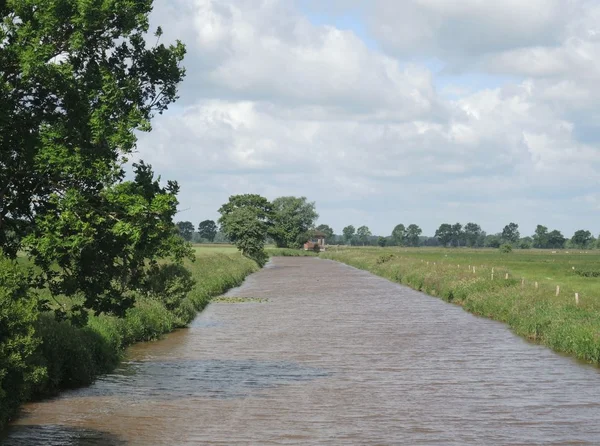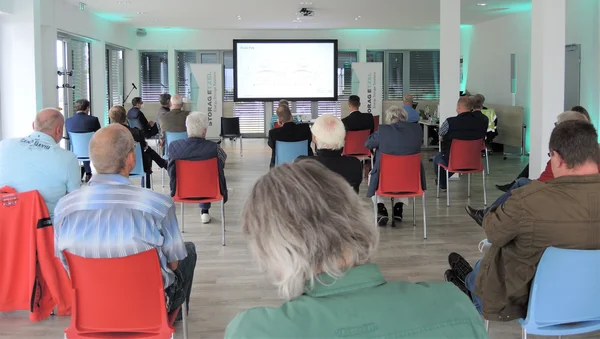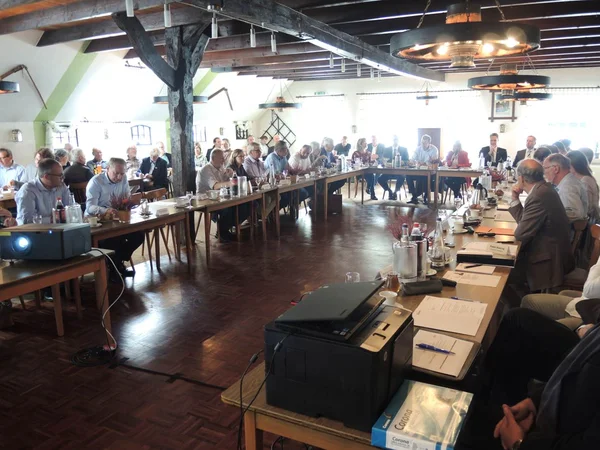Impacts
Impact analysis
Subsidence effects on the protected goods were investigated
Based on the subsidence forecast completed in 2016, the subsequent impact analysis examined and evaluated the subsidence effects from cavern construction and operation on protected assets such as buildings and infrastructure, groundwater and surface water, nature and landscape. The task of the analysis was also to develop countermeasures in time steps to reduce or even avoid adverse effects.
The target was defined as a far-reaching preservation of the status quo, i.e. preservation of the essential character of the Etzel cultural landscape, safeguarding of settlement areas including residential development and significant structures, water supply/disposal as well as agriculture and infrastructure. The "keeping dry" of the subsidence area was to be ensured by local water management measures (poldering).
Learn more

Since the beginning of 2016, preparatory work and investigations have been carried out, e.g. updating of the hydrogeological model, biological mapping and inventories. In June 2016, the experts were commissioned together with partner offices for water technology and landscape planning. An initial informational meeting for involved agencies occurred in May 2016, and the kickoff meeting with planning agencies occurred in August of that year. Subsequently, modeling and adjustment work was carried out taking into account the results from the subsidence forecast. Biological mapping and inventory was completed in January 2017. Status discussions with technical authorities, municipalities and Sielacht took place regularly from February 2017.
The impact analysis was completed after careful processing at the end of November 2018, and initial results were already presented to the public by STORAG ETZEL at the cavern advisory board meeting in mid-September 2018.
Results of the impact analysis
"Keeping dry" the subsidence area feasible with proven dewatering measures
Key statements and results of the Etzel impact analysis were presented to the advisory board members and the public on September 17, 2018 by STORAG ETZEL and the contracted specialist companies. As a result, the feasibility of "keeping dry" the subsidence area is achieved by proven measures of dewatering (conservative / unfavorable model assumptions, e.g. flood HQ100).
Here is the brief conclusion of the impact analysis:
- All measures (investments) take place during the operating time of the cavern facility
- The ongoing operating costs (energy, maintenance, upkeep) are manageable
- The required measures are scalable, they can be flexibly adapted and implemented depending on the actual subsidence process
- The protection goals set are achieved
- The costs of the mining-related measures are borne by the polluter/operator.
The impact analysis proves that the mining subsidence effects can be permanently controlled and managed. The results report will become part of the new STORAG ETZEL framework operating plan.
Information event of STORAG ETZEL in 2021 on first measures in impact management.

Previous and future planned measures in the environment of Etzel were presented
In June 2021, employees of STORAG ETZEL, representatives of the NLWKN, the district of Wittmund and the municipality of Friedeburg, as well as the Sielacht responsible presented relevant aspects of the ongoing impact management and future planned measures in the vicinity of Etzel to interested citizens and residents of the Etzel cavern facility as part of a neighborhood information event.
These included, for example, the ongoing monitoring of buildings and infrastructure as well as initial dewatering measures. In addition, questions on the topic of the evening were answered.
You can view the presentation of the event here (in German).
